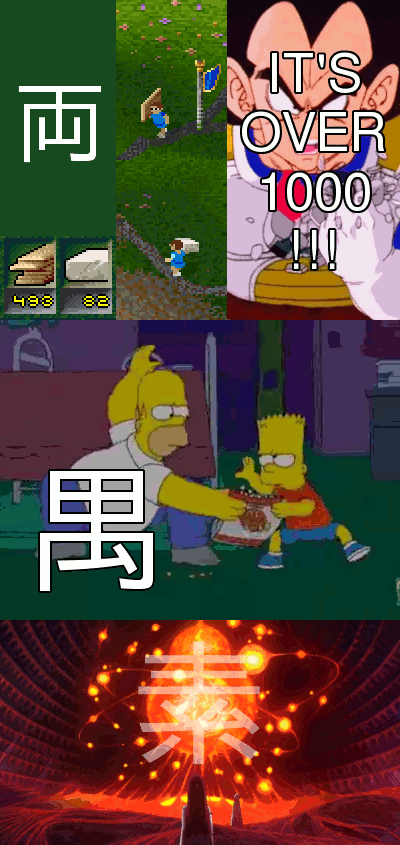漢字 — 1000+

100 kanji, 284 words — almost keeping pace with the last 100. 52 days this time. Which means I’ll most likely be at 11xx when finishing my thesis. Unless I’m super busy because of moving after that I’ll aim for 30 days per 100 again.
The usual stuff: Anki stats and kanji so far.
Additional data:
Grades
- Grade 1: 80 of 80 (100.0%)
- Grade 2: 160 of 160 (100.0%)
- Grade 3: 176 of 200 (88.0%)
- Grade 4: 128 of 200 (64.0%)
- Grade 5: 102 of 185 (55.1%)
- Grade 6: 93 of 181 (51.4%)
- JuniorHS: 202 of 934 (21.6%)
Distribution
- 1002 total unique kanji
- Jōyō: 977 of 2136 (45.7%)
- Jinmeiyō (regular): 20 of 641 (3.1%)
- 5 non-Jōyō kanji
Extrapolating these numbers: when I reach the point of knowing all 2136 Jōyō kanji I’ll presumably know 2191 in total, 44 of which will be Jinmeiyō, leaving 11 for non-Jōyō. And if I keep my kanji to vocab ratio at a constant level I’ll be at 5671 words.
Ignoring the fact that I had a really slow start, I’ll reach full Jōyō by the end of October 2015. Counting 100 per month beginning in September this year, starting at 11xx, I’d reach 2191 in July 2015. So … I guess full Jōyō between July and October 2015 is a good guess.
Since my kanji are distributed between grades/levels to a fair degree, their count is no good indicator for JLPT level. I could imagine taking the N3 in December this year. But I think I’d have to work on a few grammar points for that and I’d definitely have to increase my reading speed. — well, time will tell how I decide. In the end I learn for being able to communicate with Japanese people and read/write, not for a piece of paper. Yet, an official confirmation of “proficiency” has something to it.
2014-06-28